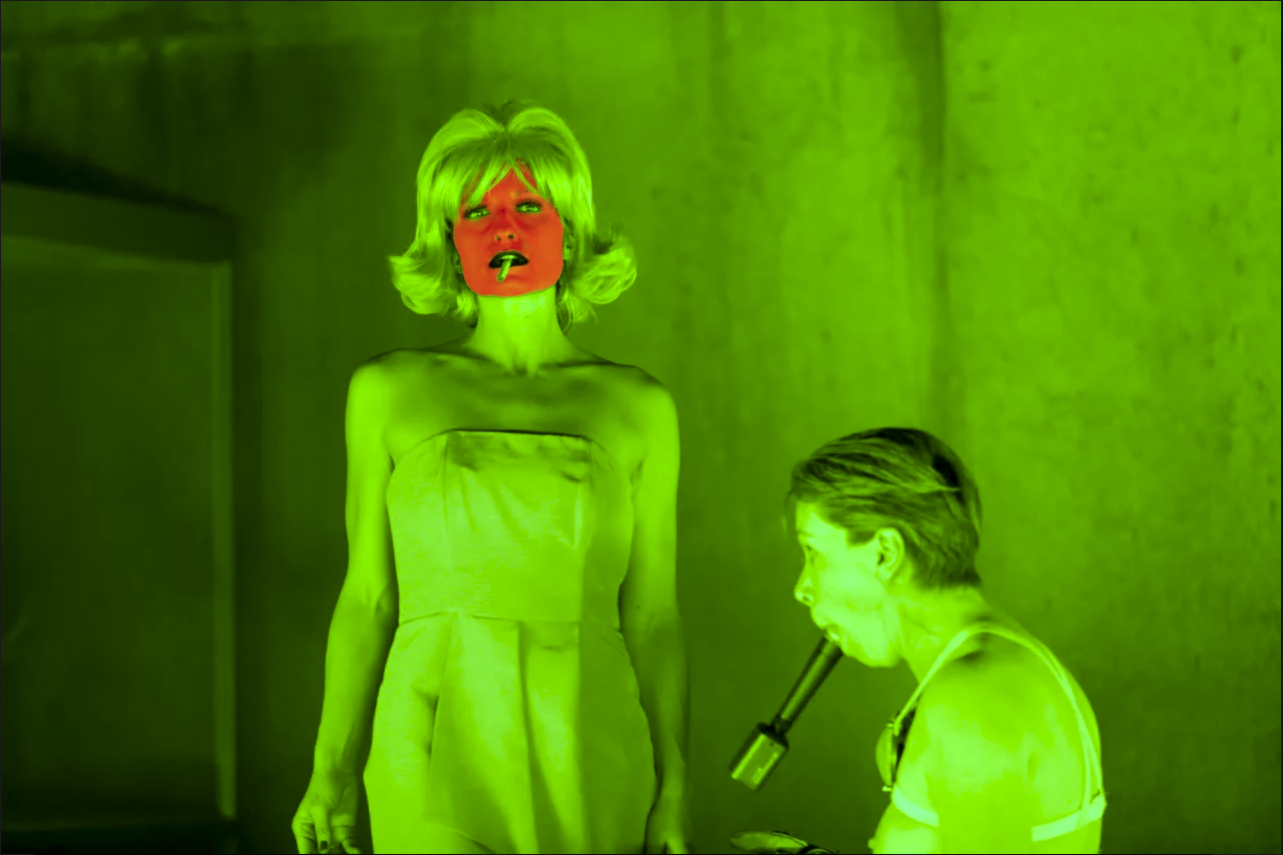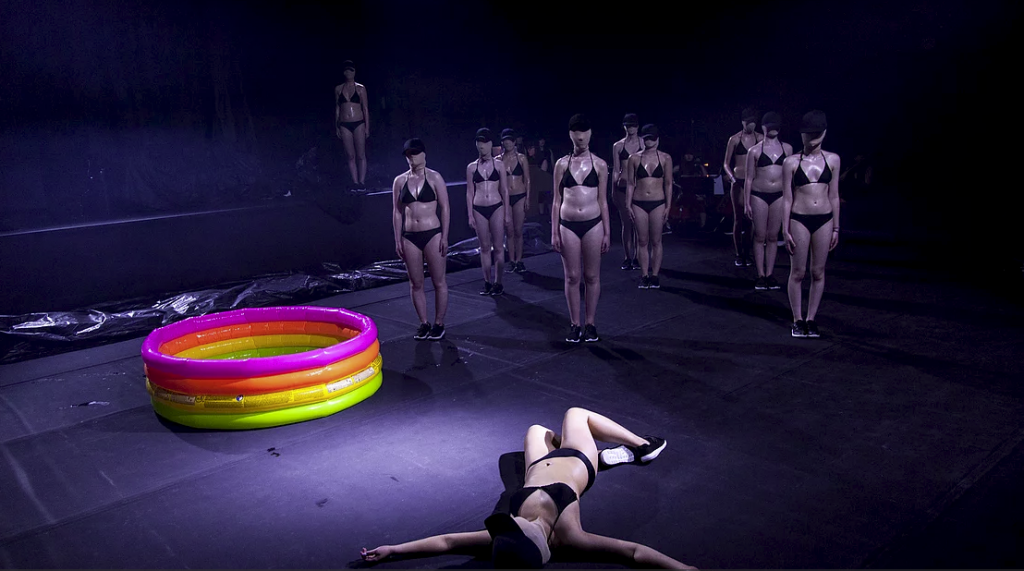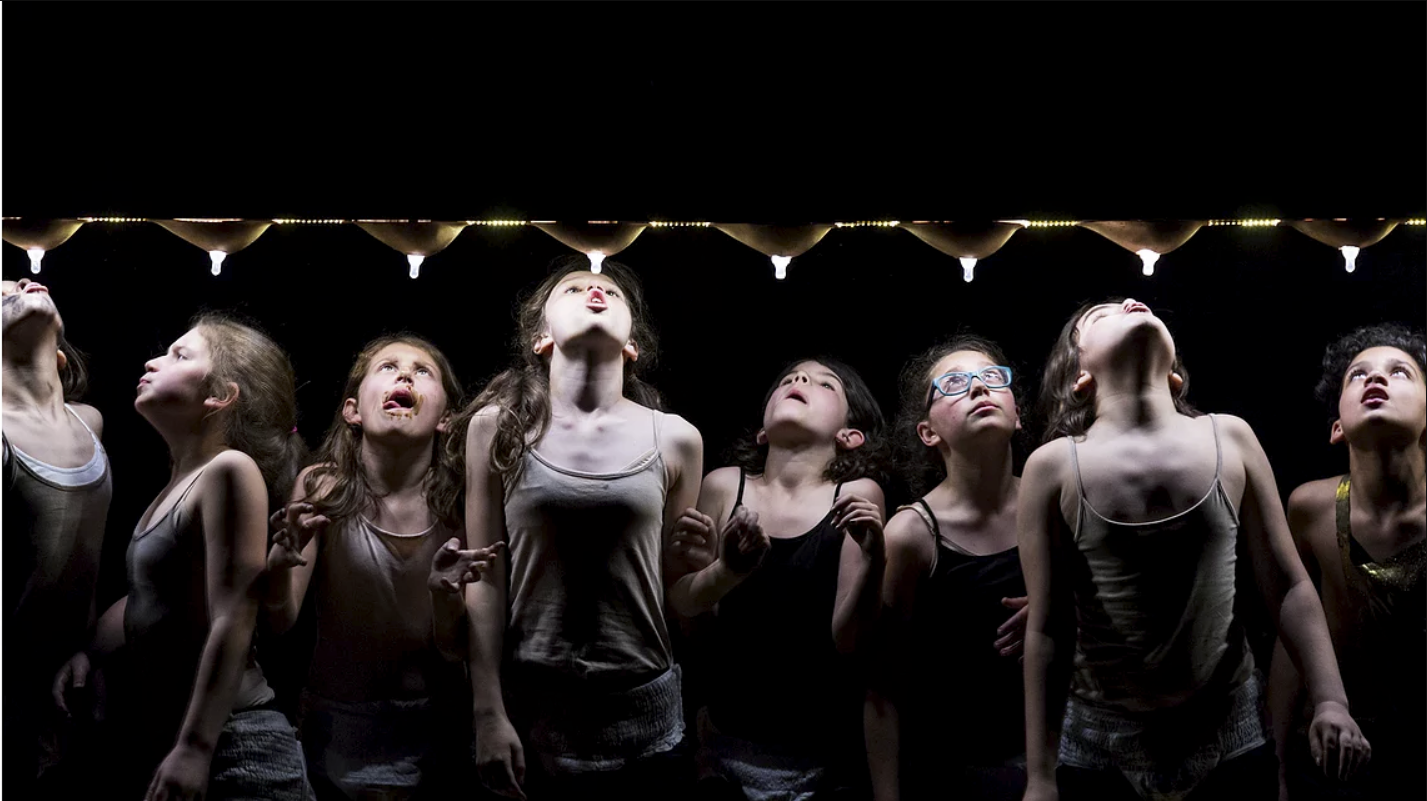BYPASSING THE RATIONAL
An interview with Adena Jacobs, director of The Howling Girls
By Pierce Wilcox
When I speak to Adena Jacobs it’s almost the end of the first week of rehearsal for The Howling Girls, and while other directors might be intimidated by the challenging first days of staging a new opera, for her it comes as a relief. The lead artists have spent so long with this project existing only in their minds. Adena and composer Damien Ricketson have worked conceptually on the project for around three years, and soprano Jane Sheldon has spent months hard at work mastering the incredible technical challenges of the score. Now, Adena says, it’s about experiencing the work in person, in their bodies, and finally ‘getting out of our heads’.
This moment has been a long time coming. SCO’s Artistic Director, Jack Symonds, played creative Cupid back in the summer of 2015 and paired Adena with Damien Ricketson with the faith that together they’d make something strange and brilliant. ‘Our initial meetings were like dating. Artistic dating!’ Adena laughs. They’d never seen each other’s work, and decided to meet up every day for a week, going to concerts, art galleries, and theatre performances, getting to know each other’s processes and what excited them as artists.
The arranged marriage stuck, and Adena speaks with enthusiasm about Damien’s approach. ‘He was from the very beginning excited to have a creative collaborator, a director, as part of the conception of the piece. I think that’s quite rare.’ They developed a collaborative style that encouraged improvisation, testing and experiment, or in one case, ‘making a bizarre instrument in your living room and showing it on Skype!’.
She didn’t know Damien’s music before starting the project, but rapidly gained an appreciation for his style. ‘His music is very open, and gives you space as the listener and as the observer in the end to experience… a series of states. It puts you through something, through an experience- and I think that’s really beautiful. It puts me in a different mode. The process of working with him is interpretive as well as generative, and he’s still willing to shift and respond and change.’ Damien has been in the room for this week of rehearsals, testimony to their ongoing creative partnership. ‘He’s in the mess of it, all the time, which is cool!’

Like all great partnerships, they wanted the same things. ‘We wanted to do something distilled and singular, a ritual experience,’ Adena explains, in which a soprano either sang themselves hoarse or staged some kind of a ritual – of death or ecstasy.
Having a third partner in the marriage helped: they knew they were making a work for the virtuosic Jane Sheldon. Knowing that Jane was doing the piece, they came together through an idea Adena describes as ‘an extreme durational event, as performed by an extraordinary soprano.’
Adena has spent most of her career in devised theatre, creating abstract and strongly visual responses to canonical texts, everything from the Bacchae of Euripides to The Wizard of Oz. Her normal process, she tells me, starts with being attracted to a particular image inside a myth or a story, but this time was different.
Like all great partnerships, they wanted the same things. ‘We wanted to do something distilled and singular, a ritual experience,’ Adena explains, in which a soprano either sang themselves hoarse or staged some kind of a ritual – of death or ecstasy.

‘I had done a series of works like that back to back, and felt a bit exhausted, and wanted to do something from a new place.’ Instead, she began with the formal principles that united her and Damien. ‘We didn’t want the work to be narrative driven… we wanted it to be pure, and distilled, and experiential.’
Knowing that, they pulled apart the ideas they’d had for Jane, and realised it all came back to the voice. The concept of de-voicing brought them to the story of the Rusalka, the Slavic water sprite who must lose her voice to become mortal and find love. You might know this as Disney’s The Little Mermaid.
Adena then remembered a story she’d read about five girls who found themselves unable to speak following the 9/11 attacks, and fed that into the work. What transpired is in no way a literal telling of their story, but might echo their experience of horror, psychic anxiety, and a possible grasp for release.
It’s an idea common to much of Adena’s work, which has been preoccupied with the place of the voice and the difficulty of language. ‘Why somebody would be silent in the face of something is a mystery,’ she says, asking the question of these girls and their fellow silent witnesses through history. ‘It could be borne from a refusal or a choice, as much as a retreat, or an escape, or a sense of paralysis. Or a symptom of something that can’t be named.’
When I complain that, as a librettist, Adena’s textless opera has put me out of a job, she assures me that it’s not out of disdain for language. ‘I enjoy literature more than theatre,’ she confides. The problem, for her, is that ‘in traditional theatre our brain goes into a particular place when we hear words being spoken,’ while she wants to ‘communicate in forms that bypass the rational.’
Skipping the brain to hit you straight in the body, her work operates much like these girls and women, who are so often rendered voiceless, or when they do speak, are not listened to or believed. ‘Because the verbal becomes difficult, politically or psychologically, it’s like their body is communicating in some other way.’
Those bodies speak in ways that can’t always be controlled, which Adena knows well, having worked with young female performers multiple times. Her collaboration with teenage girls in The Bacchae was polarising and telling, with some audience members and critics focusing on the reality of these bodies far more than the ideas they were communicating. It’s an experience Adena has considered with rigorous clarity. ‘The politics of performance immediately sets up a dynamic where there’s a paying audience and figures on stage who are both the subjects and the objects. While they control many elements of the performance, they can’t control what the audience is seeing or thinking in their minds. That dynamic is inbuilt into many young women’s experiences of walking down the street, where you can perform a certain identity but you can’t control the gaze of others.’

Even the title plays into that political question, and she assures me it won’t be what people expect. ‘It enters into the iconography of young girls and horror, but also subverts it in quite fundamental ways… It’s not a punk band, it’s not a riot, it’s not pussy riot, it’s not cheerleaders.’
What it is remains a secret, but her design team guarantees it will be stunning and surprising. She has nothing but praise for Eugyeene Teh on set & costume design, and Jenny Hector on lighting, with whom she recently collaborated on The Book of Exodus Part II. ‘What’s good about both of them is that they think in terms of form, and they’re both very intuitive. They’ve felt like a natural extension of the team. I feel like the design is using Carriageworks Bay 20 to its maximum capacity, which is exciting for a piece that ranges between the very intimate and the cosmic.’
Those shifts in scale are essential for a work that moves between the specific and the general. The performers are all women, but Adena and Damien didn’t set out to make an explicitly feminist opera, unlike many of Adena’s other works. ‘It feels like these female performers are channeling a more universal kind of energy. We’re coming together to channel a particular kind of anxiety, or terror, that feels most interesting through the bodies and voices of women.’
She returns to the 9/11 girls, who ‘absorbed everybody’s psychic horror of the event.’ If we imagine the girls in a doctor’s surgery, we encounter a specific, female experience of ‘not being believed or listened to in an institutional context.’ But what they are unable to express is something larger and shared by everyone.
‘It’s not about the experience of being howling girls, or being a woman,’ Adena insists. Rather than an opera about hysteria, she’s interested in our representations of hysteria, and the way we project it onto women and young women above all else. ‘It’s trying to understand why we need female vocalists to express this range of emotions and ideas.’
I end by asking her if she wants her audiences to leave terrified. ‘The work has to be dark to warrant its release at the end. I wouldn’t say there’s catharsis, but it does feel like there’s a sense of potential, or future-looking, which is quite beautiful. There’s an odd sense of salvation.’
You heard it here first: if you want to be saved, come to The Howling Girls.
Image: Polly Borland, MOUTH 2017, Archival pigment print, edition of 6, image courtesy Murray White Room, Melbourne
Keep in touch
General Inquiries
- contact@sydneychamberopera.com
-
SCO, Carriageworks
PO Box 3035 Redfern, NSW 2016
Postal Address -
SCO, Carriageworks
245 Wilson St Eveleigh, NSW 2015
Resident Address - (02) 8571 9106